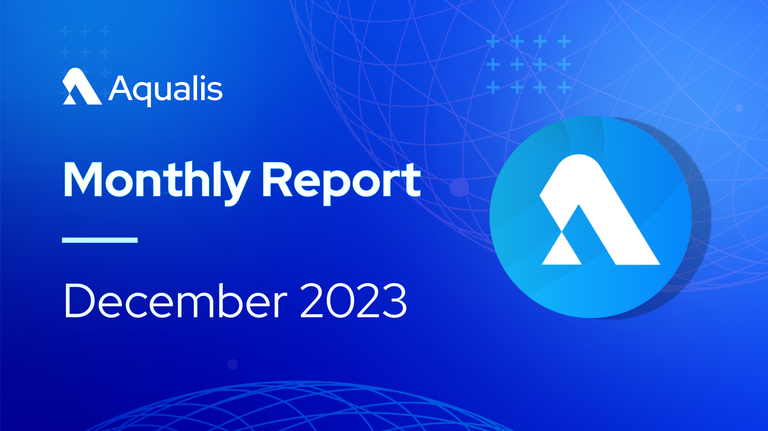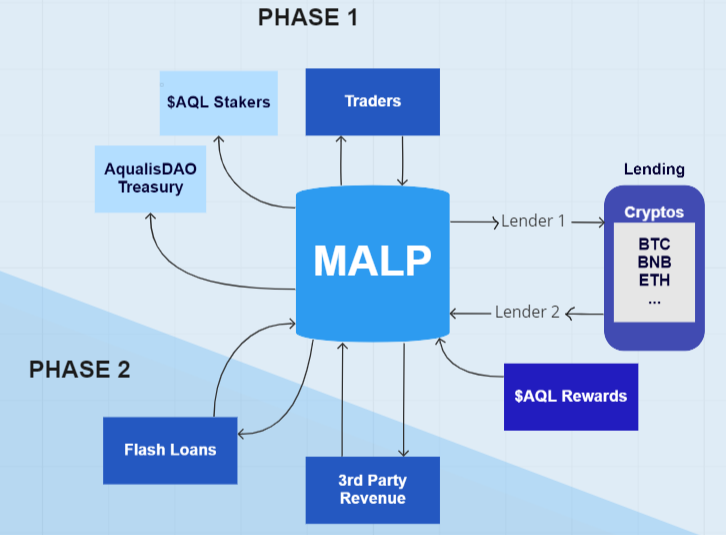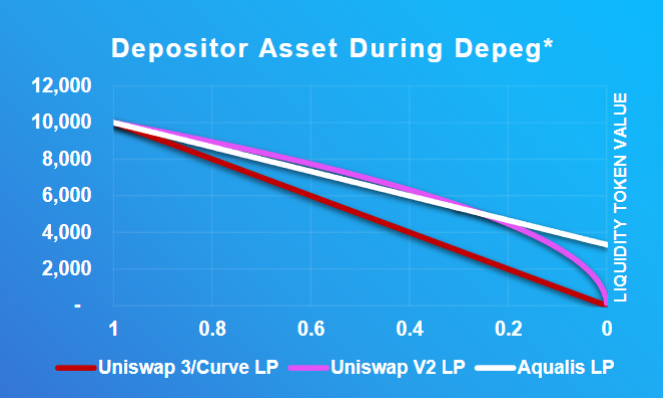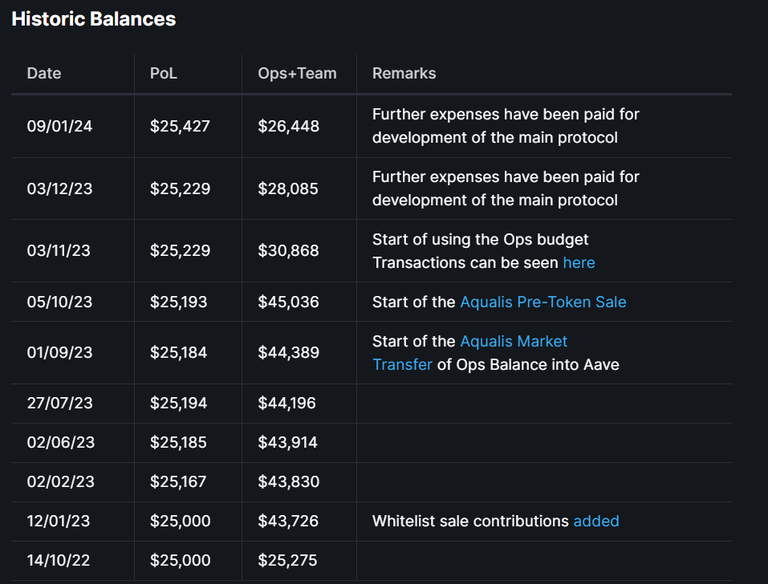Aqualis December Recap and 2023 Year in Review

Hi Aqualiens, hope you have all had a great holiday period!
Over December, the team has completed our core smart contract development before taking a small break over the Christmas and New Years period.
As December has been a quieter month, we wanted to use this monthly report to go over just how advanced the Aqualis ecosystem has become!
Table of Contents
- The MALP
- The money markets
- The integration
- Depeg protections
- Staking
- Vesting
- Community Incentives
- Launch plan (subject to change)
- Treasury Report
The MALP
The cornerstone of the Aqualis project is the multi-asset liqudity pool (MALP), which acts as the entry and exit for all stablecoin liquidity in the ecosystem.

The MALP is essentially an autonomous market maker for stablecoins, that assumes a 1:1 peg. Through this process, we essentially eliminate the need for price impacts and instead allow for slight deviations from the peg with a variable trading fee. This allows Aqualis to maximize capital efficiency, allowing low fee trading with minimal liquidity.
The Money Markets
The next piece of software we have is our money markets which is simply a fork of Aave v3 with minimal changes as to ensure the integrity of the security features built by the battle tested network.
The Integration
The reason we need our own native money market is for the integration of the MALP. This is where the innovation really comes alive!
Through the assumed peg of stablecoins, we now require minimal liquidity for efficient trading. Due to this, the Aqualis liquidity pools will likely experience excess stablecoins which can be trustlessly allocated to the money markets through a decentralized function anyone can call, thus allowing depositors to earn rewards from two sources at once.
This capital efficiency and asset multi-utilization allows Aqualis to offer low trading and money market spreads while maintaining high organic rewards for depositors.
Depeg Protections
When we say we assume a peg, people's alarm bells usually go off, wondering what happens if a depeg does happen!? But rest assured, the Aqualis method is the only AMM that will protect users' capital in a full depeg (a stablecoin goes to 0).
This is because what is allocated to the lending pool is essentially stuck in a depeg event, and can only be withdrawn by users but not traded by arbitrageurs. This is done through a simple check in the Aqualis smart contract that checks to see if the liquidity is one sided for a certain period of time, if yes then there must be a depeg! This allows us to detect a depeg event without even needing an oracle, but we plan to implement oracle integration before a live launch just for an added layer of protection.
Below is a graph of the value of the Aqualis LP token as a depeg happens, assuming 50% of the liquidity is in lending, evenly split between all 3 tokens.

Vesting
Aside from the main MALP/money markets, we have also built several peripheral smart contracts, including vesting, staking and community incentives.
The Aqualis vesting smart contracts allows vesting periods up to 7 years to be automated and verifiable on chain, allowing stakeholders to claim at their own pace as tokens unlock which reduces the telegraphed monthly or weekly dump from scheduled token unlocks.
Staking
The Aqualis staking contract is unique as it allows users to choose not only how much, but how long they want to stake for. Both of these parameters are taken into a function to calculate a user's "Aqualis Power", which ultimately reflects both the user's staking rewards and voting power.
The Aqualis staking contract allows users to stake for anywhere between 5 to 150 weeks, with each additional week giving 1% compounding bonus Aqualis Power. This means a user who stakes for the full 150 weeks will be entitled to a 344.84% bonus on their Aqualis Power!
Users will receive rewards from both protocol revenue, and a bonus community incentive smart contract that will allocate a portion of newly minted AQL tokens directly into the Aqualis staking rewards pool.
Community Incentives
AQL tokens which have been allocated to community incentives to reward users for depositing, trading, staking and possibly more will be distributed via a smart contract, proportional to the users' contribution.
A portion of protocol revenue will also be used to buyback AQL from the open market to boost the the community incentives smart contract.
Launch Plan (subject to change)
A sneak peak into our launch plan includes:
- A marketing push supported by a third party agency
- An initial exchange offering (IEO) to launch our public sale
- Continued marketing with help from the exchange
- A listing on the IEO exchange
- Deployment of our staking smart contract
- A listing on a decentralized exchange (DEX)
- Deployment of our MALP/lending ecosystem
- An airdrop initiative (more details to come)
- Launch of community incentives program and end of airdrop farming initiative
This is our current roadmap in an deal situation, please note this is all subject to change depending on our fundraising efforts in our current seed sale.
Treasury Report
For More Information
Join our Discord
Follow our Twitter
Visit Aqualis.io
Read our docs
This Post is Supporting @dec.burn
5% of all rewards from this post will go to @dec.burn, a new initiative designed to use Hive post rewards to buy back and burn DEC from the market. To learn more about how to get involved, please visit this post!
